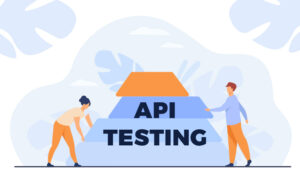A/B Testing: Unleashing the Power of Data for Optimal Results
Introduction
Are you tired of relying on guesswork and assumptions when it comes to making critical decisions for your business? Look no further than the game-changing practice of A/B testing. This powerful technique allows you to test different versions of a webpage, advertisement, or any other element, and determine which variation performs better. By collecting and analyzing data, you can make informed choices that drive conversions, enhance user experience, and ultimately boost your bottom line.

In this comprehensive guide, we’ll dive deep into the world of A/B testing, exploring its benefits, implementation strategies, and best practices. So grab a cup of coffee and let’s embark on this enlightening journey!
What is A/B Testing?
A/B testing, also known as split testing, is a method that compares two or more versions of a webpage or marketing element to identify the most effective one. By randomly dividing your audience into different groups, you can expose each group to a different variation and measure their responses. This technique provides valuable insights into user behavior, preferences, and expectations, allowing you to refine your offerings and maximize your success.
A/B testing can be used to test different elements of a webpage, including:
- Headlines
- Images
- Colors
- Text
- Buttons
- Call-to-Actions (CTAs)
- Layouts
By comparing the performance of different versions of a webpage, businesses can determine which elements are most effective at converting visitors into customers.
Benefits of A/B Testing
Implementing A/B testing into your decision-making process offers a multitude of advantages. Here are some key benefits:
- Data-Driven Decision Making: A/B testing empowers you to base your decisions on concrete data rather than mere assumptions or personal preferences.
- Improved Conversion Rates: By identifying the best-performing variation, you can optimize your website or marketing campaigns to enhance conversions, such as click-through rates, sign-ups, or purchases.
- Enhanced User Experience: A/B testing allows you to understand your users’ preferences, needs, and pain points, enabling you to tailor your offerings to deliver an exceptional user experience.
- Mitigated Risk: By testing new ideas or design changes before implementing them on a large scale, you can reduce the risk of negative impact on your business.
- Continuous Improvement: A/B testing fosters a culture of continuous improvement, as you constantly iterate and optimize your strategies based on real-time insights.
Implementing A/B Testing: Best Practices
To ensure you extract the maximum value from your A/B testing efforts, follow these best practices:
- Clearly Define Your Objectives: Start by identifying the specific goals you want to achieve through A/B testing. Whether it’s increasing click-through rates, reducing bounce rates, or improving conversion rates, clarifying your objectives will guide your testing process.
- Focus on One Variable: To obtain accurate and actionable results, test one element at a time. Whether it’s a headline, call-to-action button, or color scheme, isolating variables allows you to identify the true impact of each change.
- Sample Size Matters: Ensure your sample size is statistically significant to draw reliable conclusions. Small sample sizes can lead to misleading or inconclusive results. Consider using online calculators or consulting experts to determine the appropriate sample size for your tests.
- Randomize and Segment: Randomly assign users to different variations to eliminate biases. Additionally, segment your audience based on relevant characteristics such as demographics, location, or browsing behavior for more targeted analysis.
- Test Duration: Run your tests for an appropriate duration to account for variations in user behavior over time. Running tests for too short a period may lead to skewed results. Aim for a balance between statistical significance and test duration.
How A/B Testing Works
A/B testing involves three main steps:
- Hypothesis: The first step is to develop a hypothesis about what you want to test. This could be anything from the color of a button to the wording of a headline. The hypothesis should be specific, measurable, and based on data.
- Test: The second step is to create two versions of the webpage – the control version and the variation. The control version is the current version of the webpage, while the variation is the version with the element you want to test. The two versions are then shown to different groups of website visitors.
- Analysis: The third step is to analyze the results of the test to determine which version performed better. This is usually done using statistical analysis to ensure that the results are reliable. Once you have determined the winning version, you can implement it as the new standard version.
Why A/B Testing is Essential for Your Website’s Success
A/B testing is essential for your website’s success for several reasons:
- Improved Conversion Rates: By identifying which elements of your webpage are most effective at converting visitors into customers, you can optimize your website’s performance and improve your conversion rates.
- Better User Experience: A/B testing can help you improve the user experience of your website by identifying which elements are confusing or frustrating for visitors.
- Increased Revenue: By improving your conversion rates, you can increase your revenue without spending more money on marketing.
- Competitive Advantage: A/B testing can give you a competitive advantage by allowing you to optimize your website’s performance more effectively than your competitors.
In conclusion, A/B testing is a powerful technique that can significantly improve your website’s performance and boost your business’s success. By systematically testing different elements of your webpage, you can optimize conversion rates, enhance user experience, increase revenue, and gain a competitive advantage in the market.
So, unleash the power of A/B testing and embark on a journey of continuous improvement for your website. By harnessing the insights gained through testing, you can drive better results, increase conversions, and ultimately achieve your business goals. Start testing today and unlock the potential of your website like never before.
Now that you understand the significance of A/B testing, it’s time to take action. Implement this powerful technique and watch as your website transforms into a high-performing conversion machine. Embrace the art of experimentation, learn from your results, and optimize your way to success. Happy testing!






